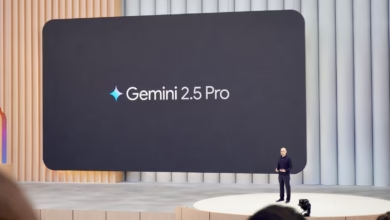Google Widens Access to AI Mode in Search, Adds Smarter Local and Product Features
Conversational Search Takes a Step Forward

▼ Summary
– Google is expanding access to its experimental “AI Mode,” removing the waitlist for users in the U.S. aged 18 or older who opt into Google Labs experiments.
– A new “AI Mode” tab is being tested within the main Search interface for select U.S. users, indicating a shift from the experimental Labs environment.
– AI Mode now integrates richer information, displaying visual cards with details like ratings, reviews, and pricing for places and products, enhancing search results beyond simple links.
– A continuity feature is added, allowing users to revisit previous searches and continue multi-step tasks without restarting, via a new left-side panel on the desktop interface.
– These updates reflect Google’s investment in evolving Search to handle complex, conversational interactions similar to AI assistants like ChatGPT.
Google is pushing its experimental “AI Mode” further into the spotlight, expanding user access and adding new capabilities designed to handle more complex, conversational search journeys. Initially launched via Google Labs in March, AI Mode aims to let users ask multi-part questions and engage in follow-up queries directly within Search, mimicking interactions common with chatbots like Perplexity AI or ChatGPT.
The key change is broader availability. Google is removing the waitlist for AI Mode, opening it up to anyone in the U.S. aged 18 or older who opts into Google Labs experiments. Furthermore, the company is testing a dedicated “AI Mode” tab within the main Search interface for a small percentage of US users, signaling a potential path out of the purely experimental Labs environment.
Beyond Links: Integrating Real-World Information
Significant functional updates accompany the wider rollout. AI Mode is gaining the ability to directly integrate richer information about places and products into its conversational responses. Instead of just providing links, users asking about things like restaurants or specific items will now see visual cards embedded in the AI Mode results.
For local spots like restaurants or shops, these cards can display quick-look details such as ratings, reviews, photos, and operating hours. When searching for products – for example, “best foldable camping chair… under $100” – AI Mode can surface relevant items with details like real-time pricing, promotions, images, shipping information, and even local availability, linking directly to retailers. Google illustrates this with examples like finding nearby vintage shops with specific furniture styles, showing how busy they are, and offering quick links for directions or calls.
Picking Up the Thread
Addressing another aspect of complex searches, Google is adding a continuity feature. For users engaged in longer research projects or multi-step tasks using AI Mode, a new left-side panel on the desktop interface will allow them to revisit previous AI Mode searches. This lets users easily recall information already gathered and ask further follow-up questions without starting over.
These updates indicate Google’s continued investment in evolving Search beyond simple keyword queries. By integrating more structured, real-world data and conversational memory into AI Mode, Google aims to make its core product more adept at handling the nuanced, multi-turn interactions increasingly common with dedicated AI assistants.
(Inspired by: TechCrunch)






